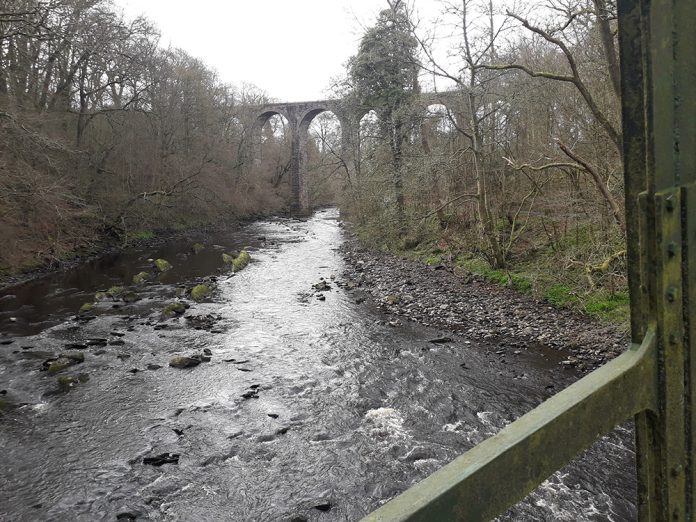Scottish Water is coordinating a one-year project to analyse sources of antimicrobial resistance (AMR) in the River Almond.
greatest threats to public health, as it reduces the effectiveness of antibiotics and makes treating common infections more difficult.
While predominantly considered a clinical issue, the environment also plays a part in its spread, especially in polluted waterways.
Flooding, sewer overflows and agricultural run-off all contribute to a cocktail of pollutants that can increase AMR genes in the water, potentially turning regular bugs into ‘superbugs’.
In the project – funded by the Hydro Nation Chair Research & innovation Programme – river samples are being analysed to identify the relative risks presented by different sources of pollution.
The team comprises scientists and researchers from the James Hutton Institute and the University of Stirling.
The study covers 14 potential sources of AMR, including wastewater treatment plants, septic tanks, old mining facilities and run-off from both agriculture and the motorway.
Dozens of samples have already been taken for the study, which began in March, with more to be collected throughout the year. Researchers at the Hutton are now extracting DNA from the samples, which will be analysed to find genes that contribute to AMR. They are also measuring concentrations of pollutants that may increase AMR.
Their findings will enhance our understanding of how man-made sources of pollution contribute to AMR, as well as providing valuable information on how to monitor and address the issue in the future.
Dr Eulyn Pagaling, project lead at the Hutton, said: “There is already strong evidence that pollutants such as human and animal faeces, heavy metals and pharmaceuticals can exacerbate AMR in the environment. What we don’t yet understand is the scale of the problem caused by the different sources of this pollution. Once we know this, we will know which areas to target to help reduce the AMR burden.”
Professor Andrew Tyler FRSE, Scotland Hydro Nation Chair at the University of Stirling, added: “The project, which is made possible through funding from HNC, is a critical piece of work. The research will be fundamental in establishing a baseline understanding of AMR in the River environment and the potential sources contributing to it.”
A Scottish Water spokesperson said: “Scottish Water is committed to understanding and mitigating the impact of antimicrobial resistance (AMR) in our waterways. This collaborative project working with ForthERA and the Hydro Nation Chair/Stirling University will support the scale up/digital twin development, providing a significant step towards identifying the sources of AMR pollution in the River Almond.
“The project will enable Scottish Water to accurately understand and communicate information on the health of the River Almond with stakeholders and communities to inform, engage, and enable effective action.
“By analysing samples and measuring pollutant concentrations, we aim to pinpoint the key contributors to AMR and develop targeted strategies to reduce its presence in the environment. This research is crucial for safeguarding public health and ensuring the ecological well-being of our rivers. We are proud to be part of this initiative and look forward to the valuable insights it will provide.”




